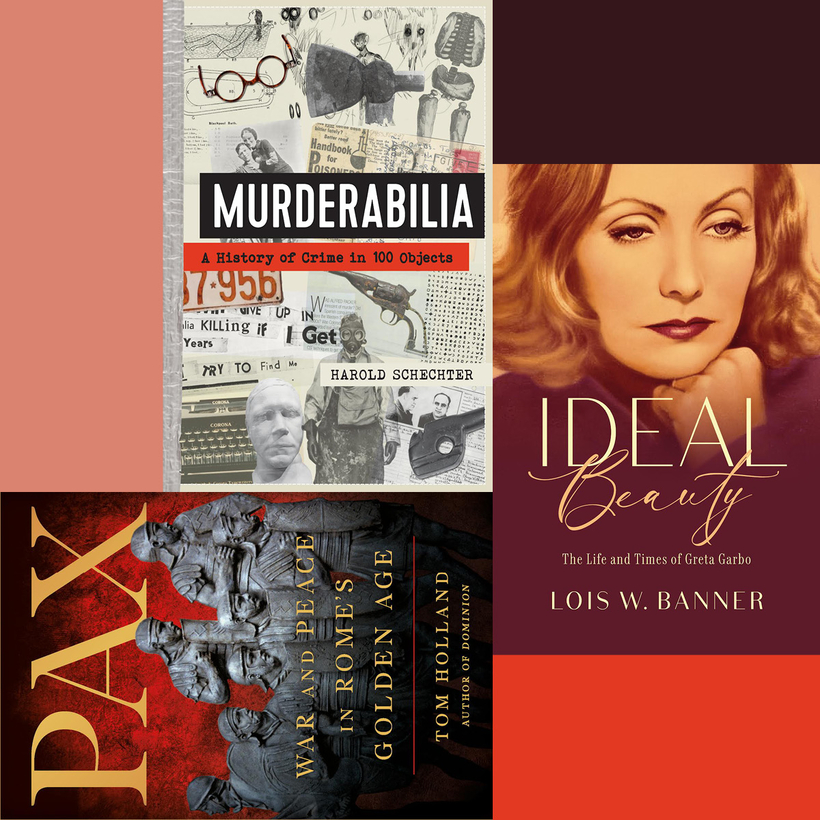Neil MacGregor, the British art historian, may not have been the first author to categorize a subject into 100 objects, but there is no doubt his A History of the World in 100 Objects, published in 2010, set off an avalanche of similar volumes, ranging in subject from India to samurai to U-boats at war. So Harold Schechter is relying on a time-tested formula to write a history of crime in 100 objects, and it is a measure of his research and gift for storytelling that the reader not only learns new details about familiar murders but about murders that are just as gruesome but lost to time. Chain saws, action figures, boats, candy wrappers, typewriters: all figure as reminders of hideous crimes. You can see one of his most famous objects, the bullet-riddled 1934 Ford Fordor Deluxe sedan in which Bonnie and Clyde met their end, by visiting Primm Valley Resort and Casino, in Las Vegas. The book not only saves you the trip but gives you 99 other reasons to be an armchair detective.
Oh gosh, another book about Greta Garbo, the Swedish movie star who spent more years as an elusive presence on Manhattan’s streets than she ever spent on the screen, before dying in Manhattan, in 1990, at age 84. What makes Lois W. Banner’s book different and highly worthwhile is her focus not so much on the films of Greta Gustafsson (a Swedish director persuaded her to change her last name to Garbo before she went to Hollywood, in 1925) as on the person herself: her insecurities, her religiosity, and her persistent health problems (perhaps even including gonorrhea). She captures well the milieu in which Garbo became a star, but, more to the point, places her in the context of what beauty meant in the era in which Garbo thrived.
She never actually wanted to be alone, and was as social as the next star; living in New York, she called herself “a hermit,” but an acquaintance, after seeing her at three parties in two weeks, called her “a hermit about town.” But she did love privacy and nature, and abhorred journalists, cutting off any friends who spoke to them about her. She was gender fluid long before its popularity as a self-defining stance, often referred to herself as “the boy,” and enjoyed telling childish jokes. She reached the peak of her artistic career playing the title role in 1933’s Queen Christina, a Swedish royal who cross-dressed and was bisexual. Scenes from the film were pulled by censors, and, afterward, Garbo stuck to the more popular fare that had made her financially secure. Look at the famous Steichen photo of her, dressed in black, with her hands holding back her hair, unsmiling, and you see someone who wanted to be both remembered and unknowable at the same time.
“Pax Romana” refers to the golden age of the Roman Empire, beginning in 69 A.D., shortly after the death of Nero, and ending some 70 years later with the passing of Hadrian. Tom Holland does not simply focus on the rulers and their personalities but on what life was like for more ordinary folks during these decades. This was a hard-won peace, abetted by violence and cruelty, balanced between civilization and barbarism. The Romans may have given us the blueprints for sanitation, roads, public order, and medicine, but they also built the Colosseum, the world’s most famous stage for blood sports. This is history at its best: celebratory, tragic, and timeless.
Ideal Beauty is available at your local independent bookstore, on Bookshop, and on Amazon. Murderabilia and Pax will be available beginning September 26

